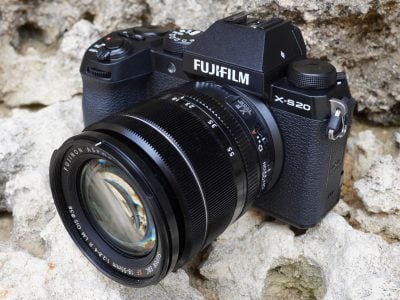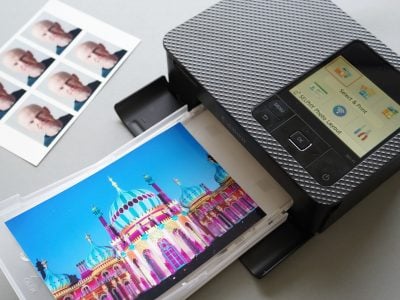Sony Alpha DSLR-A700 final production review
-
-
Written by Gordon Laing
Sony Alpha DSLR-A700 resolution comparison
Sony Alpha DSLR-A700 results continued…
| Support this site by shopping via these links | ||||||||||||||||||||||||||||
 |
To measure and compare the pre-production Sony Alpha DSLR-A700’s resolving power we photographed the Enhanced Digital Camera Resolution Chart with it and a number of rival models, each using their best quality JPEG and default image tone and sharpening settings. We tested the A700 using the Carl Zeiss 16-80mm lens and the body was running the latest version 2.0 firmware. The crops are taken from the original images, saved as High Quality JPEGs in Photoshop CS2 and presented here at 100%. Each number represents 100 lines per picture height (lpph), so a figure of 20 means a resolution of 2000 lpph. |
In our studio resolution tests, the Sony Alpha DSLR-A700 fitted with the Carl Zeiss 16-80mm delivered 2350 and 2400 lpph of horizontal and vertical resolution respectively. This places it ahead of every 10 Megapixel DSLR we’ve tested and roughly neck in neck with Canon’s EOS 5D – even when the 5D was tested with a prime lens. We’d expect the A700 to resolve a similar amount of detail to the EOS 5D at its lowest sensitivities though as both share essentially the same resolution and at low ISOs, noise hasn’t yet come into play. However as you’ll see on our A700 noise results, the EOS 5D retains a comfortable edge at higher sensitivities. Before moving onto our noise results though, scroll down to the bottom of this page to see how the A700 compares in this test using RAW. |
Sony Alpha DSLR-A700 with Sony DT 16-80mm |
Sony Alpha DSLR-A100 with Sony DT 16-80mm | |
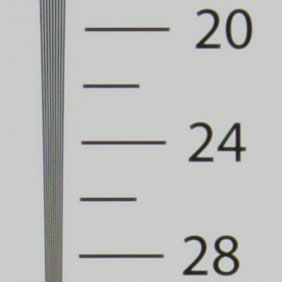 | 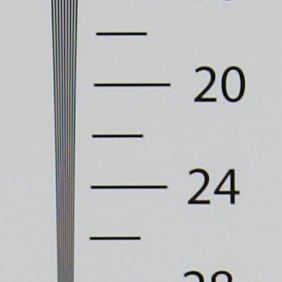 | |
2350 lpph, DT 16-80mm at 35mm, f8, 100 ISO |
2200 lpph, DT 16-80mm at 35mm, f8, 100 ISO | |
Canon EOS-40D with Canon EF 85mm f1.8 USM |
Canon EOS-5D with Canon EF 85mm f1.8 USM | |
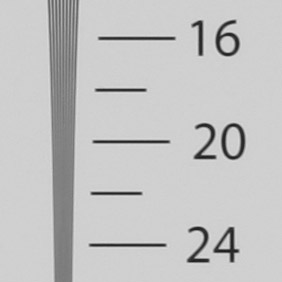 | 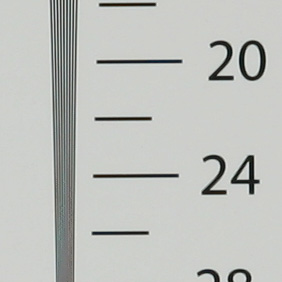 | |
1950 lpph, 85mm, f8, 100 ISO |
2400 lpph, 85mm, f8, 100 ISO |
Sony Alpha DSLR-A700 with Sony DT 16-80mm |
Sony Alpha DSLR-A100 with Sony DT 16-80mm | |
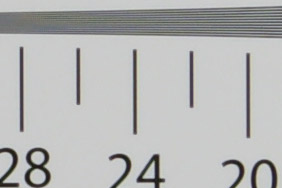 | 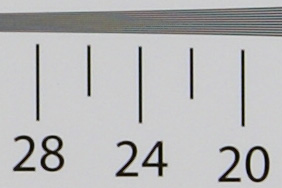 | |
2400 lpph, DT 16-80mm at 35mm, f8, 100 ISO |
2200 lpph, DT 16-80mm at 35mm, f8, 100 ISO | |
Canon EOS-40D with Canon EF 85mm f1.8 USM |
Canon EOS-5D with Canon EF 85mm f1.8 USM | |
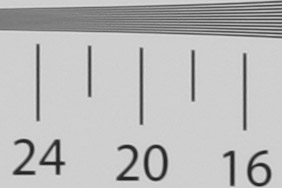 | 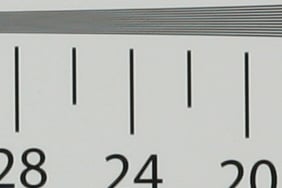 | |
2100 lpph, 85mm, f8, 100 ISO |
2300 lpph, 85mm, f8, 100 ISO |
Sony Alpha DSLR-A700 Studio resolution: RAW
We photographed our test chart in the A700’s RAW plus Large Fine JPEG mode, allowing us to directly compare images created from exactly the same data. Below are crops taken from the RAW files converted using Sony’s supplied Image Data Converter SR 2.0 and Adobe Camera RAW 4.2 – both programs using their default settings.
Using the default settings, it’s clear the RAW samples converted with Sony’s software suffer from greater moiré than the in-camera JPEGs, reducing the maximum resolution. In contrast, Adobe Camera RAW has noticeably extended the maximum resolution over the JPEGs with moiré only kicking-in above 2500 lpph. This is an impressive result for the A700, at least in this test using ACR, although it’s worth noting ACR didn’t do as good a job with our outdoor resolution sample on the previous page.
Now let’s check out the camera’s performance at different sensitivities in our Sony A700 noise results page.
Sony Alpha DSLR-A700 RAW Sony Image Data Converter 2.0 |
Sony Alpha DSLR-A700 RAW Adobe Camera RAW 4.2 | |
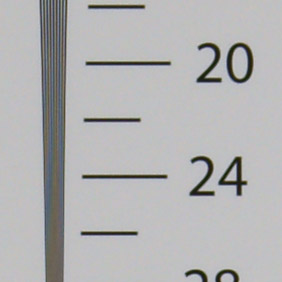 | 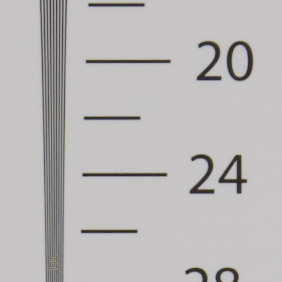 | |
2250 lpph, DT 16-80mm at 35mm, f8, 100 ISO |
2550 lpph, DT 16-80mm at 35mm, f8, 100 ISO |
Sony Alpha DSLR-A700 RAW Sony Image Data Converter 2.0 |
Sony Alpha DSLR-A700 RAW Adobe Camera RAW 4.2 | |
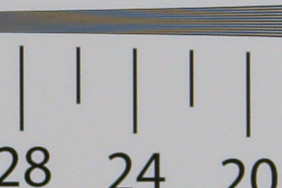 | 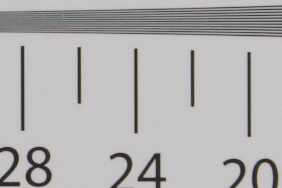 | |
2300 lpph, DT 16-80mm at 35mm, f8, 100 ISO |
2500 lpph, DT 16-80mm at 35mm, f8, 100 ISO |

